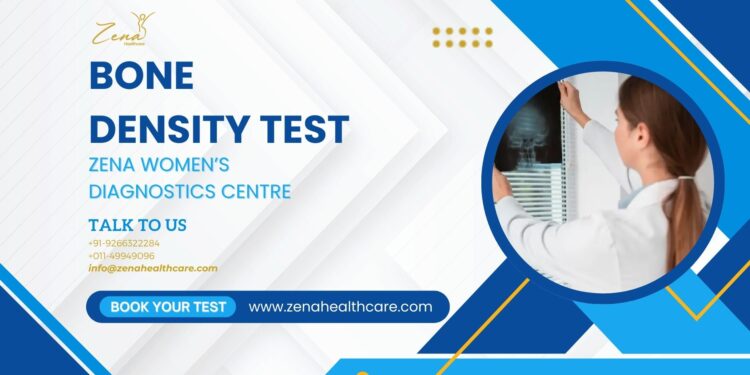Osteoporosis is often called the “silent disease” because it progresses without symptoms until a fracture occurs. Millions of people around the world, especially postmenopausal women and the elderly, suffer from this condition, which weakens bones and increases the risk of breaks from minor falls or even everyday activities.
However, early detection can make a world of difference. Through a simple, non-invasive test known as bone density testing, healthcare providers can identify low bone mass before a fracture happens. In this blog, we will explore the importance of bone density test in Delhi for early osteoporosis screening, how bone density testing works, who should get tested, and how early detection can help prevent debilitating injuries.
Understanding Osteoporosis
Osteoporosis is a condition in which bones become porous, brittle, and weak, increasing the likelihood of fractures. The word “osteoporosis” literally means “porous bone.” Some of the common facts about osteoporosis are mentioned below:
- Most common in postmenopausal women, but also affects men and younger individuals.
- The hip, spine, and wrist are the most common fracture sites.
- Fractures can lead to chronic pain, reduced mobility, and even loss of independence.
- Worldwide, 1 in 3 women and 1 in 5 men over the age of 50 will suffer an osteoporotic fracture.
Why Does Early Detection Matter?
Because osteoporosis often has no symptoms until a fracture occurs, early detection is vital. By identifying and treating bone loss early, patients can:
- Reduce the risk of fractures
- Slow or stop bone loss
- Improve bone strength
- Maintain an active lifestyle
What Is Bone Density Testing?
Bone density testing measures how much calcium and other minerals are in your bones, indicating their strength and risk of fracture. The most widely used and recommended method is the DEXA scan (dual-energy X-ray absorptiometry).
Here’s how a DEXA Scan Works:
- A low-dose X-ray machine scans the spine and hips. These are common fracture sites.
- The test is quick (10–30 minutes), painless, and non-invasive.
- Results are presented as a T-score and Z-score.
Who Should Get a Bone Density Test?
The following groups should consider bone density testing:
Women:
- Aged 65 or older
- Under 65 with risk factors (e.g., early menopause, low body weight, smoking, family history)
Men:
- Aged 70 or older
- 50–69 with risk factors (e.g., long-term steroid use, low testosterone, previous fractures)
Others:
- Adults with a fracture after age 50
- Individuals with medical conditions or medications that affect bone health (e.g., rheumatoid arthritis, long-term corticosteroids, thyroid disorders)
Risk Factors for Osteoporosis
Here are some of the common risk factors associated with Osteoporosis mentioned below:
- Age (risk increases with age)
- Female gender
- Family history of osteoporosis or fractures
- Caucasian or Asian ethnicity
- Menopause (especially early menopause)
- Smoking
- Excessive alcohol intake
- Sedentary lifestyle
- Poor calcium and vitamin D intake
- Low body weight
- Certain medications (e.g., steroids, anti-seizure drugs)
The Benefits of Early Bone Density Testing
The key benefits of early bone density testing is mentioned below:
- Risk Assessment: Identify your risk of developing osteoporosis or having a fracture in the future.
- Preventive Action: Detect low bone mass (osteopenia) early so you can start lifestyle or medical interventions.
- Treatment Monitoring: If you’re undergoing treatment, follow-up scans help track bone density changes over time.
- Fracture Prevention: Early treatment significantly lowers the risk of fractures, improving long-term quality of life.
What to Expect During a Bone Density Test
Here’s what you can expect during a bone density test:
- You’ll lie on a padded table as the machine scans your hip and spine.
- The test is painless and doesn’t require an injection or contrast dye.
- No special preparation is needed, but avoid calcium supplements 24 hours before testing.
- The amount of radiation is very low, much less than a chest X-ray.
Alternatives and Adjuncts to DEXA Scanning
Here are some of the alternatives to DEXA scanning mentioned below:
- Quantitative CT scan (QCT): More detailed, but higher radiation and cost.
- Ultrasound: Often used on the heel; portable but less accurate than DEXA.
- FRAX Score: A tool used alongside BMD to calculate 10-year fracture risk based on clinical factors.
For Expert Care visit Zena!
Bone density testing is a powerful tool in the fight against osteoporosis. It provides early, accurate insight into your bone health well before serious complications arise. If you’re over 65, have risk factors, or have experienced fractures, talk to your healthcare provider about getting a DEXA scan. For more information, book an appointment at Zena Female Diagnostic Centre in Greater Kailash, today!
























